The People Near Transit (PNT) report establishes the levels of urban transit services in Pune Metropolitan Region and the accessibility gaps that affects its residents.
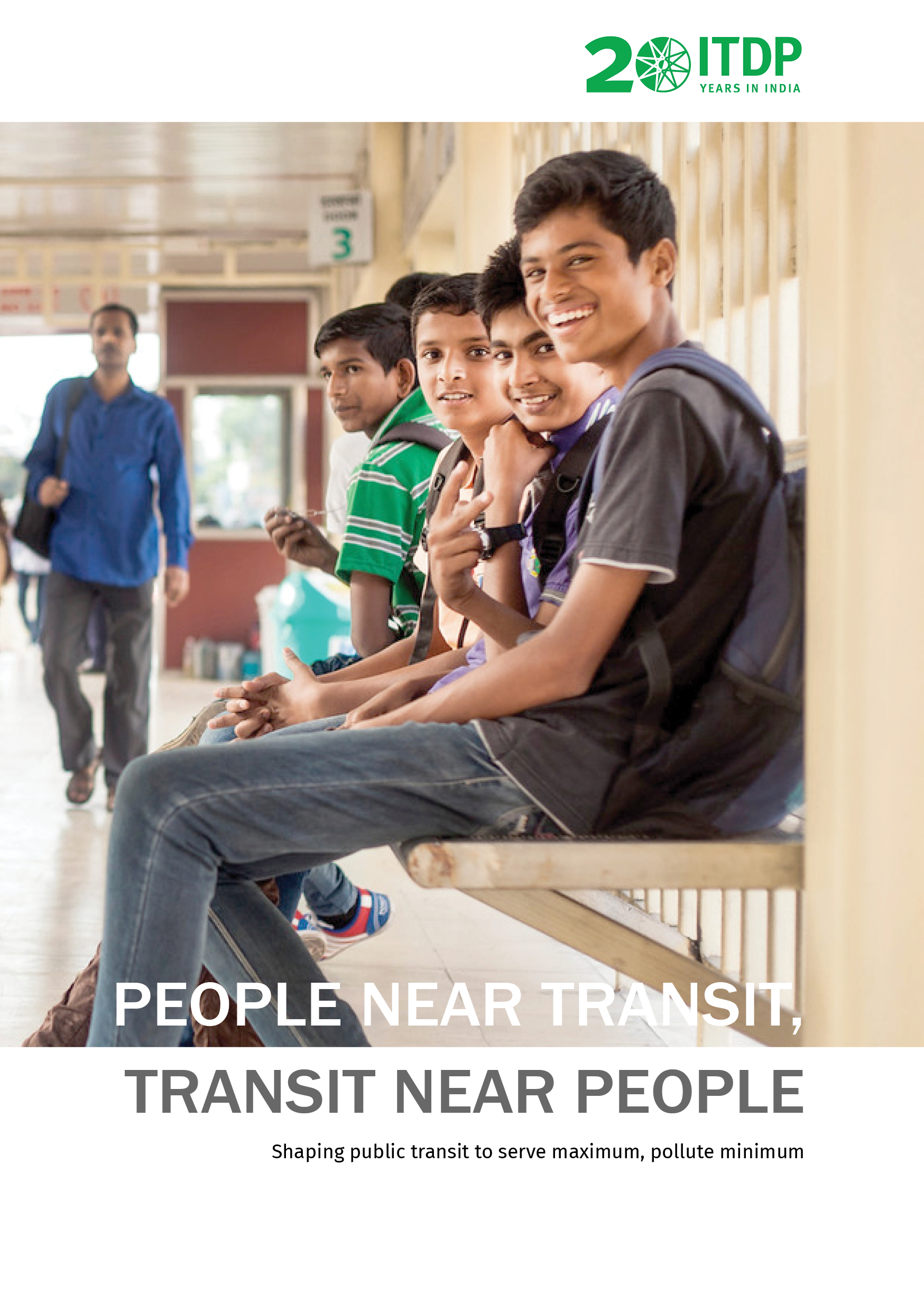
by
The People Near Transit (PNT) report establishes the levels of urban transit services in Pune Metropolitan Region and the accessibility gaps that affects its residents.
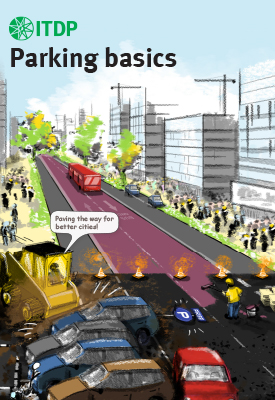
Parking is a mystery. Many public agencies push for more parking in buildings, but, rather than alleviating the parking problem, it leads to massive traffic jams, severe air pollution, and more road deaths. Under the illusion that density creates congestion, public agencies also control building density. However, it is parking, not density, that creates traffic congestion. Excessive parking supply that is cheap or free induces people to use personal motor vehicles—even when good public transport is provided.
Cities across the world are now realizing their past follies. They now follow a simple mantra—Add transit, Build density, Cut parking. Put another way, where there is good connectivity to mass rapid transit, building density is welcome but parking supply is not. Parking fee is pegged to parking demand—when demand increases, fee also increases. Revenue thus generated is used to build complete streets—with better walking and cycling infrastructure—and expand public transport.
Parking Basics outlines these key principles and steps involved in managing on-street parking and regulating off-street parking.
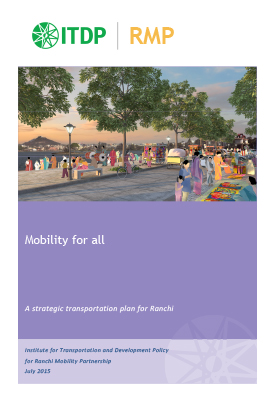
Ranchi, the capital city of Jharkand is fast urbanising. Though the state remains largely rural, Ranchi and the other cities have been rapidly growing with the influx of people from the hinterland in search of opportunity. These cities need to be planned and manage to provide a safe, affordable, attractive and inclusive environment for the citizens.
With a good transport system comes better connect between people and also more sustainability- socially, economically and environmentally.
The lack of a formalized public transport system in Ranchi has led to dependence on private vehicles and paratransit for day-to-day travel, congestion and safety issues. While most of the new transport initiatives deal with road widening and flyovers, there have been no concrete efforts to address the people’s need and propose genuine solutions.
The Ranchi Mobility Charter, developed by the Ranchi Mobility Partnership led by ITDP calls for a development model that focuses on a high-quality bus based transport system, parking management and a pedestrian friendly outlook.
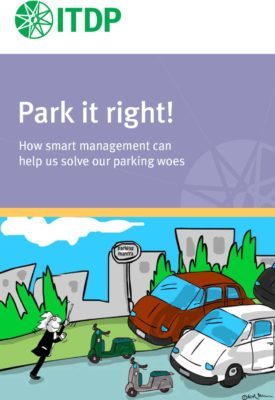
In most Indian cities, parked vehicles dominate the public realm by consuming more and more of our cherished parks, plazas, streets and common spaces. Each parking space consumes from 15m2 to 30m2 and the average motorist uses two to five different parking spaces every day. Hence, many cities are questioning the current parking policy which dedicates scarce public space to car parking.
Parking management is a critical tool for achieving a variety of social goals. This booklet ‘Park it Right’ is a brief illustrated guide to principles of on-street parking management.
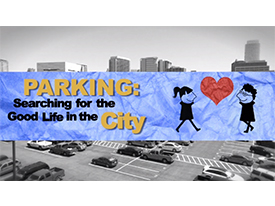
For too long cities tried to make parking a core feature of the urban fabric, only to discover that yielding to parking demand tears that fabric apart. Parking requirements for new buildings have quietly been changing the landscape, making walking and transit less viable while inducing more traffic.
Many cities around the world are now changing course by eliminating parking requirements while investing in walking, biking, and transit. Soon cities in the developing world will follow, providing many new lessons of their own.
Parking isn’t the easiest topic to wrap your head around, but it is right at the core of the transportation problems facing most cities. We hope this film helps illuminate how to fix them.
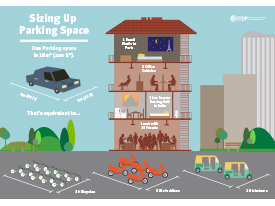
There are many other potential uses for spaces reserved for parking. This illustration puts the opportunity costs in
perspective, showing how the private and public realm could be reshaped for higher value purposes.
Download Sizing-Up-Parking-Spaces
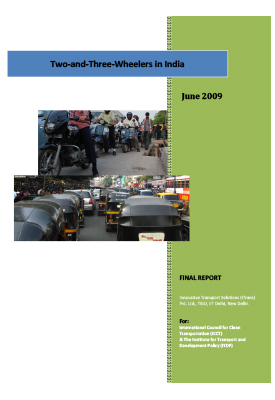
Increased urbanism and migration towards Indian cities have lead to growth of employment and commercial nodes in suburban areas, resulting in urban sprawl that favors private motorized transport systems. As a result, the number of non-motorized trips have reduced drastically in the past few years while paratransit systems have come into existence to serve those who do not own a private transport mode and are inadequately served by public transport systems.
This report looks at some of the policy & tax incentives given by the government to the industry behind 2 & 3 wheelers and subsequent framework at policy & individual levels to control emissions & regulate users. The status of existing transport modeling systems used in traffic data analysis is also reviewed along with a commentary on the drawbacks of existing systems. Analysis of mode shares, trip lengths & safety issues for these transport modes across select cities in India is presented along with a review of existing transport policies & policy recommendations for safe & efficient use of 2 & 3 wheelers in India.
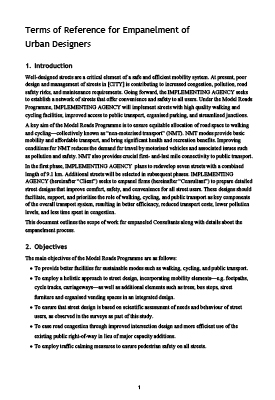
Well-designed streets are a critical element of a safe and efficient mobility system. At present, poor design and management of streets in cities are contributing to increased congestion, pollution, road safety risks, and maintenance requirements. Going forward, City corporations may seek to establish a network of streets that offer convenience and safety to all users. They will implement streets with high quality walking and cycling facilities, improved access to public transport, organised parking, and streamlined junctions.
A key aim of the Street Design project is to ensure equitable allocation of road space to walking and cycling—collectively known as “non-motorised transport” (NMT). NMT modes provide basic mobility and affordable transport, and bring significant health and recreation benefits. Improving conditions for NMT reduces the demand for travel by motorised vehicles and associated issues such as pollution and safety. NMT also provides crucial first- and-last mile connectivity to public transport.
This document outlines the scope of work for empaneled Consultants along with details about the empanelment process.
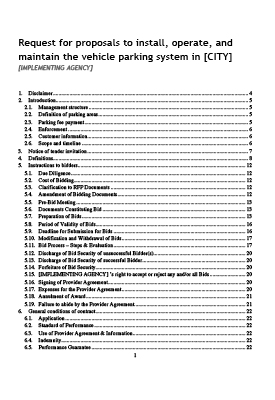
Effective parking management is an essential tool to facilitate the efficient use of road space and to ensure free passage for pedestrians, cyclists, public transport, and motorists. In addition, appropriate parking fees can ensure that personal motor vehicle users compensate the city for the use of valuable land on which they park their vehicles.
This Request for Proposals (RFP) has been prepared to implement a modern Parking System to improve on-street parking operations, optimise usage of the available parking supply, and enhance the overall functioning of streets in the city. The new Parking System will employ an information technology (IT) backbone to facilitate greater transparency and efficiency in the collection of parking fees and enforcement operations.